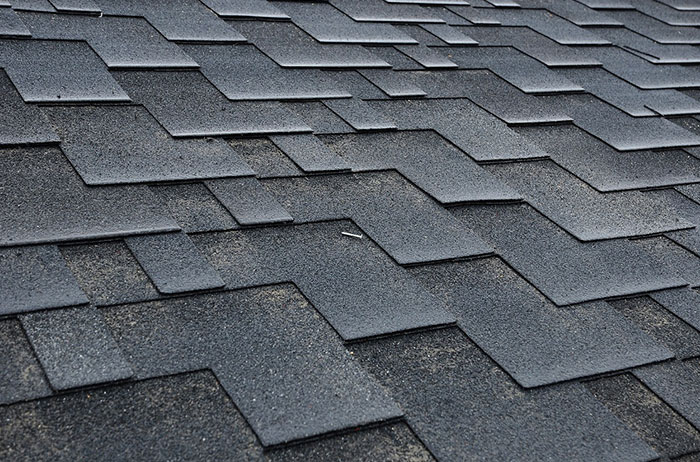A home’s roofing structure is one of the most important elements that protects its integrity. However, for a roof to adequately serve its purpose, it also needs a steady support system to protect its integrity.
Fortunately, there are many support types for roofs, and each has advantages and disadvantages. When you have comprehensive knowledge about different types of roof support, you can pick the best option for your needs.
Therefore, in this article, we will explore the world of support systems, discussing ten different types of roof support you can use for your roof.
Wooden Rafters
Wooden rafters are one of the oldest and most popular roof support systems. They usually have a set of horizontal wooden beams fitted across the entire roof width. The horizontal wooden beams are the essential components of these types of support systems.
These roof support systems are mostly seen in houses like traditional cottages, cabins, and barns.
Advantages
- Wooden rafters are one of the most cost-effective roof support types. They are not expensive to purchase and install, so they are a good option if you are on a tight budget.
- These types of support systems are very easy to work with. You can easily cut them into different shapes to fit the specific type of roof design you want. This makes them a versatile option.
- Wooden rafters have a certain aesthetic appeal they bring to the support system. They have a natural and earthly look that tends to add warmth to the interior part of the building.
Disadvantages
- Wooden rafters need to be stronger to span through longer and wider roofs. They will need additional support to do that.
- They are very vulnerable to rot and decay after some time. The more they get exposed to humidity, the quicker they decay.
- Woods are highly flammable. In the case of a fire outbreak, wooden rafters can aid the widespread of the fire.
Steel Beams
These types of roof support systems are majorly used in the construction of modern homes’ roofing systems. Thanks to how strong and durable they are, steel beams can adequately serve as support systems for the roofs of larger buildings.
Advantages
- Steel beams have a high-load bearing capacity thanks to their strength and durability. They can cover longer distance areas under big roofs.
- Steel beams are a safer option because they are non-combustible. They aren’t prone to get caught in wildfires.
- Steel beams are low maintenance. They are resistant to rot, decay, and pests.
Disadvantages
- Steel beams are quite expensive. You may need specialized knowledge and equipment to properly install the.
- Steel beams are very heavy. Hence, they may need additional support upon installation.
- They are prone to corrosion if you do not coat and maintain them properly.
Trusses
Trusses usually consist of sections of interconnected triangles of wood or steel. You will often find trusses supporting the roofs of residential and commercial buildings since they are a good alternative to traditional wooden rafters.
Advantages
- Trusses are strong enough to distribute their weight evenly. This makes them more durable than traditional wooden rafters.
- You can design trusses to fit different types of roof shapes and sizes.
- Trusses usually come fabricated from the factory. It, therefore, reduces labor costs and installation time.
Disadvantages
- Trusses usually come with specific measurements. As a result, they don’t make it easy for you to effect changes on them during construction.
- They are not as visually appealing as other roof support systems.
- You need specialized knowledge and expertise to design and install trusses.
Laminated Veneer Lumber (LVL)
Laminated Veneer Lumber (LVL) is an engineered wood that supports roofing systems. This LVL usually consists of thin layers of wood veneer bounded together with adhesives.
Advantages
- LVLs can bear a high capacity of load. Thus, they are less prone to warping or splitting than roof support types.
- You can cut LVLs into different roof designs and shapes.
- LVLs are eco-friendly since they are made of wood.
Disadvantages
- LVL is an expensive roof support system.
- You need to have specialized expertise to install an LVL.
- LVLs are susceptible to moisture damage, especially when you don’t coat and maintain them properly.
Glulam Beams
Glulam beams are a type of support system built with engineered wood. It usually consists of several layers of dimensioned lumber bonded together with adhesives. They are majorly used because of their strength and visual appeal.
Advantages
- These types of roof support systems can sustain heavy loads. They can also span longer distances across all ends of a roof.
- They are so beautiful that they add to a building’s visual appeal.
- Glulam beams are very eco-friendly.
Disadvantages
- Glulam beam is an expensive roof support option. Its installation tends to require specialized equipment and expertise.
- They get prone to moisture damage if you do not coat or maintain them properly.
- Glulam beams may not be available in every area.
Timber-Steel Hybrids
Timber-steel hybrids are a type of roof support system that is usually strong and durable. They usually combine the strength of metals with the visual appeal of timber.
They are often used to support the roofs of commercial and industrial buildings.
Advantages
- They offer the type of strength and durability you will get from steel while simultaneously offering the natural aesthetics you will get from wood.
- You can design them to fit into different shapes and sizes.
- They offer a unique visual appeal that you don’t get in most roof support systems.
Disadvantages
- Timber-steel hybrids are usually more expensive than most types of roof support systems.
- You may need to get someone who specializes in the installation of timber-steel hybrids to be able to install it properly.
- The timber portion of this roofing support system is susceptible to damage caused by moisture. You will need to coat and maintain it properly to avoid such damage.
Concrete Beams
Concrete beams usually offer high strength and durability. You will mostly see them in commercial and industrial buildings. Sometimes, they tend to be used in large residential homes.
Advantages
- Concrete is less prone to warping, unlike traditional wooden rafters.
- They have a good level of resistance to fire outbreaks.
- Concrete beams are relatively inexpensive to maintain and not easily damaged by moisture like wooden rafters.
Disadvantages
- Concrete beams are heavy, so they may need help to carry their weight and that of the roof they ought to support. Hence, you may need additional support structures to hold their weight together.
- There aren’t many design options when you want to install concrete beams.
- Concrete beams can be very expensive.
Masonry Walls
Masonry walls are a roof support system that combines different materials, including stone, brick, or concrete, to support the roof. You will majorly see this type of roof support system in residential homes.
Advantages
- They are very resistant to heavy winds and hurricanes.
- You don’t need to do much to maintain masonry walls, and they are not as easily susceptible to moisture damage as other roof support types.
- Masonry walls have a strong resistance to fire. This makes them a safe option for people who would like to reduce the possibility of fire outbreaks.
Disadvantages
- Masonry does not offer a variety of aesthetic design options to choose from. Its design option is limited.
- It can be very heavy. Sometimes, you may need additional support structures to hold their weight.
- They can be very expensive.
Pre-Engineered Metal
Pre-engineered metal is a roof support system that uses steel frames and metal panels to support a roof. You will mostly see these roofing support systems used in commercial and industrial buildings.
Advantages
- They are very strong and durable, ideal for handling heavy load capacity. These roofing support systems are also less prone to warping conditions in wood rafters.
- Pre-engineered metals are easy and quick to install. Hence, installing them can help you save construction time and monetary costs.
- These types of roof support systems require little maintenance, and they are not easily susceptible to damage caused by moisture.
Disadvantages
- There’s no variety of design options when installing the pre-engineered metal.
- They can get noisy during heavy rainfall.
- Pre-engineered metals are very likely to rust, especially if your home is in an area with high humidity.
Tensile Structures
These roof support systems usually use tensioned fabric to support the roof. You will mostly see them in buildings located in areas such as sports arenas, concert halls, and outdoor event spaces.
Advantages
- They are extremely lightweight, and they only need little support structures for themselves. Thus the cost of constructing tensile structures is minimal.
- Tensile structures can come in different designs. They offer a wide range of unique shapes and patterns.
- Natural light can find its way through tensile structures. Thus, buildings with tensile structures as roof support systems tend to have a brighter, more airy interior space.
Disadvantages
- Tensile structures do not last long. They have a limited lifespan, so you may need to replace them after some years.
- You need to regularly maintain tensile structures to make sure the fabric doesn’t get torn.
- Tensile structures cannot withstand extreme weather conditions like heavy snow, wind, and rainfalls.
Conclusion
Deciding on the roofing support system is not necessarily a cross you should carry by yourself. If you need to decide on a support system, speak with a professional roofing contractor such as Shoreline Roofing.
At Shoreline Roofing, our experienced professionals can help you decide which roof support system is best for your building and also help you with all your roofing needs. Contact us today to schedule a consultation.



